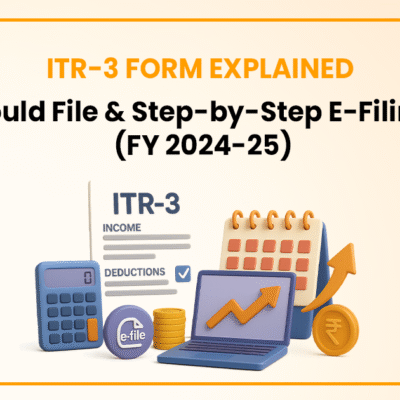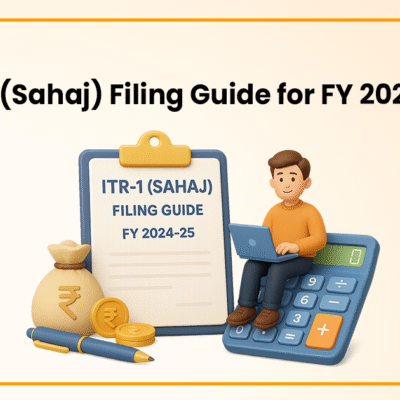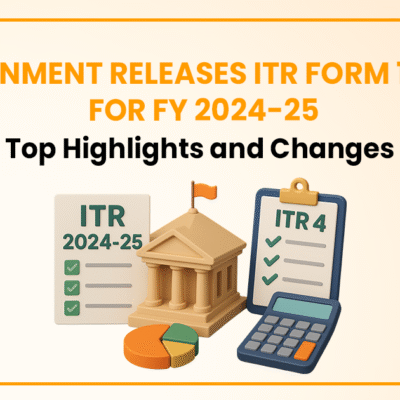Understanding the GST Rates in 2023 for Different Goods and Services in India
- October 17, 2023
- Miscellaneous
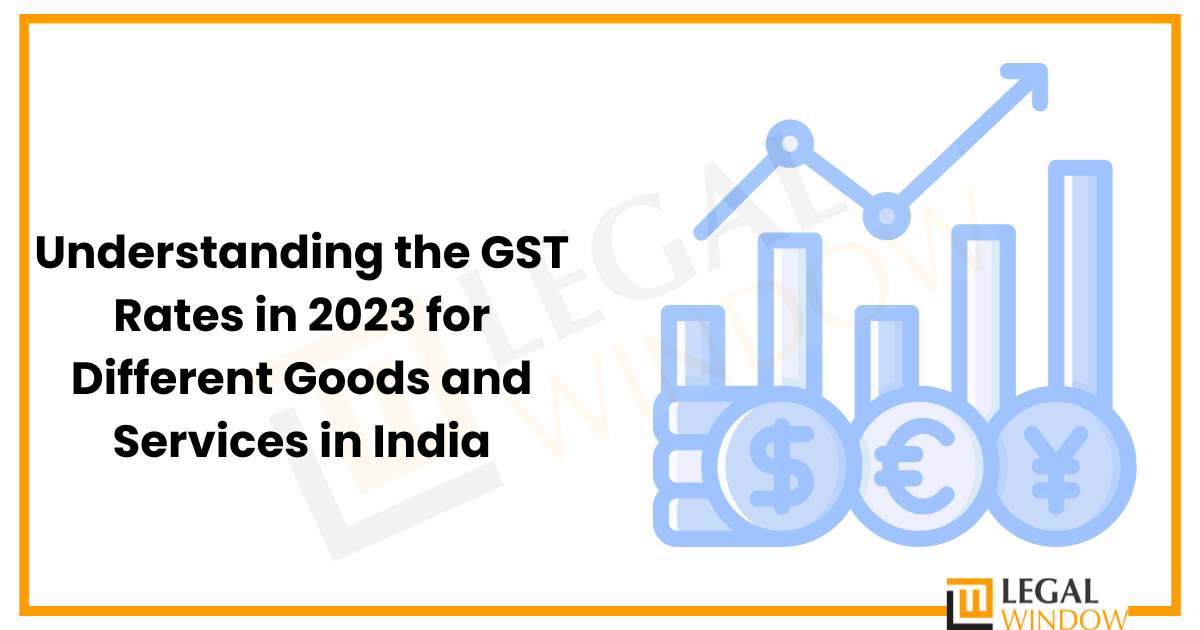
The GST has transformed the tax landscape in India since its implementation on July 1, 2017. This inclusive indirect tax regime has included multiple taxes, making the process simpler and more transparent. One of the important aspects of GST is the categorization of goods and services into different tax slabs, each carrying a specific rate. This article deals with understanding the GST rates in 2023 and the new GST rates list for different goods and services in India.
Contents
Understanding the GST Structure
GST in India is divided into four broad tax slabs: 5%, 12%, 18%, and 28%. Some essential items, including food grains, are exempt from GST. Additionally, certain goods and services fall under a 0% or Nil rate. The purpose of these various slabs is to classify goods and services based on their nature, essentiality, and impact on consumers. Let us explore the different GST rates in India, in 2023 for specific categories.
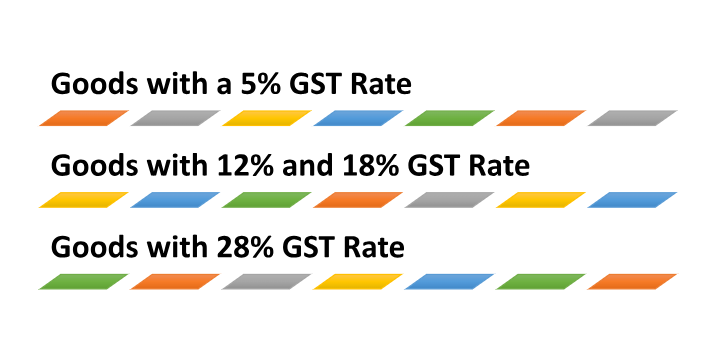
- Goods with a 5% GST Rate
A wide range of goods come under the 5% GST slab, including essential food items such as tea, coffee, spices, edible oil, sugar, and sweets. Medicines, medical devices, textiles, and other important products like coal, fertilizers, and umbrellas also fall under this slab.
The 5% rate on essential items helps to ensure that the burden on consumers remains minimal, ensuring access to necessary commodities at affordable prices.
- Goods with 12% and 18% GST Rate
Goods like packed dairy products, processed foods, mobile phones, and footwear fall under the 12% GST slab. At 18%, items like hair oil, toothpaste, soap, capital goods, cameras, and air conditioners are categorized. These rates strike a balance by ensuring that products commonly purchased by the middle class are taxed at a moderate rate, neither causing a significant price hike nor significantly impacting revenue collection.
- Goods with 28% GST Rate
The highest tax slab of 28% is primarily applicable to luxury and sin items. Luxury cars, motorcycles, aircraft, yachts, tobacco products, and aerated drinks are subject to this rate. The highest slab aims to discourage the consumption of these goods as they are considered non-essential and consumed mainly by the affluent sections of society. This may be considered the highest GST rate in India.
Also, read: Effective Goods and Services Tax (GST) Rates in India
Services under GST
GST also encompasses various services, each categorized under specific tax slabs. Education and healthcare services are exempt from GST, as they are deemed essential for the development of society. GST rates on services involve:
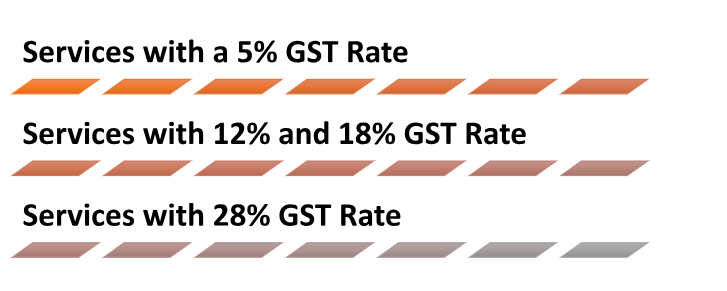
- Services with a 5% GST Rate
Transportation services, air travel (economy class), and small restaurants with a turnover below a specified threshold attract a 5% GST rate. These services are considered essential, contributing to the affordability and accessibility of diverse modes of transportation and dining options.
- Services with 12% and 18% GST Rate
Services like hotel accommodation, air travel (business class), movie tickets, telecom, and financial services fall under the 18% GST slab. On the other hand, outdoor catering, restaurants with a turnover exceeding the threshold, and salon services are taxed at 12%. These rates ensure that services used by the middle class and higher-income groups pay a reasonable amount of tax without causing significant price fluctuations.
- Services with a 28% GST Rate
Certain premium services like five-star hotel accommodation, gambling, and cinema halls attract a 28% GST rate. These rates aim to discourage excessive spending on luxury services and maintain market equilibrium.
Rationale and Impact of GST Rates in 2023
The categorization of goods and services into different tax slabs under GST follows a rational approach, focusing on affordability, essentiality, and revenue generation aspects. It ensures that goods and services necessary for daily life are taxed at lower rates, not putting additional financial strain on the average consumer. Additionally, higher tax rates on luxury items help in curbing conspicuous consumption and promoting equitable distribution of wealth.
Moreover, the GST regime has significantly reduced the complexities associated with multiple taxes, ensuring seamless credit flow throughout the supply chain. This has resulted in minimizing the cascading effect of taxes and positively impacting businesses by eliminating the burden of multiple taxes imposed earlier.
Also, read: Pragmatic Impact of GST Rate on Indian Economy
Winding Up Note
The implementation of GST has revolutionized the tax system in India, removing inefficiencies and bringing transparency in the taxation of goods and services. The categorization of items into various tax slabs aims to strike a balance between revenue collection and affordability while promoting economic growth. Understanding the GST rates in 2023 helps consumers and businesses to make good and informed decisions, ensuring compliance. After all, it enhances the contribution to the development of our nation.
In case of any query regarding the Understanding of the GST Rates in 2023 for Different Goods and Services in India, feel free to connect with our legal experts at Legal Window at 72407-51000.
Company Secretary and diligent learner deeply immersed in the world of corporate law, compliance, and governance with a focus on developing a robust foundation in legal principles and corporate practices. Passionate about exploring the intricacies of company law, regulatory compliance, and corporate governance.
Categories
- Agreement Drafting (23)
- Annual Compliance (13)
- Change in Business (37)
- Company Law (150)
- Compliance (90)
- Digital Banking (3)
- Drug License (4)
- FEMA (17)
- Finance Company (42)
- Foreign Taxation (9)
- FSSAI License/Registration (15)
- GST (123)
- Hallmark Registration (1)
- Income Tax (213)
- Latest News (34)
- Miscellaneous (170)
- NBFC Registration (8)
- NGO (18)
- SEBI Registration (6)
- Section 8 Company (10)
- Start and manage a business (27)
- Startup/ Registration (134)
- Trademark Registration/IPR (48)
Recent Posts
All Website Tags
About us
LegalWindow.in is a professional technology driven platform of multidisciplined experts like CA/CS/Lawyers spanning with an aim to provide concrete solution to individuals, start-ups and other business organisation by maximising their growth at an affordable cost.


